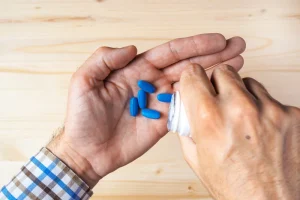
A NIDA study maintains that exposure to drug-related objects may influence a former addict’s behavior. The brain registers these stimuli and processes them in the same areas involved in drug-seeking behavior. If you can find alternative routes to your next destination, try to map out your drive. We’ve streamlined our admissions process to make it as easy as possible. Our team is available 24 hours a day, 7 days a week to answer any questions you may have.
Helping Patients: Ten Clinical Relapse Prevention Strategies
For instance, some people may feel insecure about sex and think they have to drink alcohol in order to relax before having sex. Other people may use drugs when they feel angry, lonely, depressed, sad, or bored – but any feeling can become an internal trigger. But whether it’s a one-time event or a series of traumatic events, trauma affects each person differently. In fact, the same event could cause two people to respond completely differently.

About Mental Illness
It is important to help patients learn to identify their own warning signs of the relapse processthis will help them increase self-awareness and strengthen recovery. Within the relapse process, there are many https://ecosoberhouse.com/ opportunities for the individual to intervene, reengage with recovery-oriented behaviors, and get back on track with recovery. Attending therapy is also a good way to help with processing internal triggers.
- However, if avoidance hinders your ability to function, you should seek help.
- Someone exposed to a trigger may experience impaired judgment or awareness.
- Our drug and alcohol rehab programs and mental health rehab services are tailored to each individual’s specific needs.
- Resilience equips individuals with the strength to weather challenges, adapt to change, and persist in their recovery journey.
- Being able to talk to someone who has experience dealing with triggers personally is one of the best resources to have.
How to Deal With Relapse Triggers
When triggered, the brain might interpret past traumatic events as current. This causes the body to experience symptoms as it did in response to the original trauma (such as the fight-or-flight response). Mental health professionals don’t yet know precisely how triggers form.
The Influence of Environment and Situations
- If you or someone you know may need help dealing with triggers, Agape offers an environment focused on recovery.
- Professional support can be invaluable in helping individuals recognize and navigate external triggers.
- Failure to address and maintain these triggers during the recovery process only serves to increase the risk of relapse.
- You may want to let your loved ones know what you’re going through and how you plan on coping.
- We also provide various forms of holistic therapy that can provide fulfillment and effective coping methods.
A significant amount of people struggling with substance abuse find it difficult to resist relapse triggers. The negative side effects of relapsing after enrolling in drug and alcohol recovery programs is another concern. In recent experiences, drug and alcohol abuse after practicing abstinence, heightens an individuals chances of overdosing. In the context of mental health conditions, internal triggers are the cognitive and emotional cues that lead to a relapse of symptoms. For example, negative thoughts and feelings might trigger a relapse of drug or alcohol use.
- Developing self-awareness, honing coping skills, and utilizing support systems are effective strategies for managing relapse triggers after exploring relapse and its coping strategies.
- Physical pain, whether it be chronic pain or pain from an injury or physical illness, can be a powerful relapse trigger if you’re not adequately prepared to manage it.
- Then, you might begin to justify why and how you can use again in a more controlled way.

They are external factors or situations that remind one of past behaviors. When you are exposed to a potential trigger, the cravings will pass within a few internal and external triggers hours if you resist the urge to relapse. Having a plan to get through times when your cravings are triggered will be very helpful in avoiding a relapse.

It’s important for people in recovery to be aware of the internal triggers they struggle with the most and have a plan in place to seek support when needed. Relapse triggers are social, psychological, and emotional situations and events that may lead an addicted person to seek out their substance of choice and ultimately relapse. By focusing on improving your overall health, not just your addiction, you can further enhance your chances of a successful and lasting recovery. Here are the top 10 common relapse triggers you might encounter during your recovery journey. Understanding these triggers can help you stay motivated and on track with your recovery goals, ultimately leading to a healthier, happier life. Recognizing and addressing these common relapse triggers allows for proactive management, thus reducing the likelihood of reverting to substance use.
Many people find that visiting certain places causes intense triggering in them. This can be somewhere traumatic, such as a childhood home, or it can just be a building or even a neighborhood where substance use happened. Visiting these places can be triggering for many people, and while many times they can be avoided, there are situations in which they can’t. Internal and external triggers refer to emotional, environmental, or social situations that prompt memories which cause a desire to use drugs or drink alcohol again. Each time we’re triggered is a learning opportunity that can help us manage our reactions in the future.
